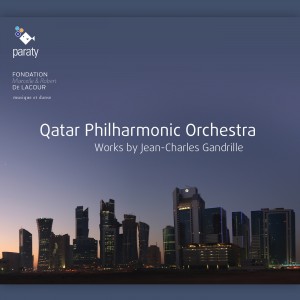
The orchestra, a childhood dream
2015 has been a good, sun-filled year for Jean-Claude Gandrille. The Auvers sur Oise Festival has chosen him as its guest composer. To be fair, he is already well-acquainted with the town, beloved of the Impressionist painters, as he serves as organist there for the Église Notre-Dame. During the festival, ten concerts will include his works; it’s a sort of consecration for this improvising organist and composer. Gandrille keeps a privileged place for the organ in most of his compositions, be they for violin, trumpet or (more unexpectedly) vibraphone or even accordion, as well as in his religious works such as his recent Stabat Mater.
A passion for music was sparked early on for this young, precocious and self-taught talent, a great lover of French music. Jean-Claude Gandrille says so himself: “When I was ten or eleven, I discovered composing: I became fascinated by the orchestra. I devoured scores by Ravel and Debussy, and Charles Koechlin’s treatise on orchestration. Olivier Messiaen and Henri Dutilleux were also major influences, as well as the man who was my mentor for a brief but intense time: Jean-Louis Florentz. And at the age of 15, I threw myself into my first orchestration, still completely self-taught: the Bolero for organ and percussion by Pierre Cochereau.”
The wheels had begun to turn: there was a Medieval Symphony for orchestra and ondes Martenot, followed by a concerto for piano and orchestra, Voyage into the Unsayable. And then came the admission exam for the Paris Conservatoire à Rayonnement Régional’s orchestration class in 1998. Two years later, at the age of 18, there he was, unanimously awarded a first prize in orchestration with distinction by the jury. Afterwards came the orchestration class at the prestigious Conservatoire National Supérieur de Musique et de Danse de Paris. In both cases he was the youngest student, and he left the CNSMDP with a first prize in 2003. From that moment on, he has enjoyed a clear path to pursue composition.

